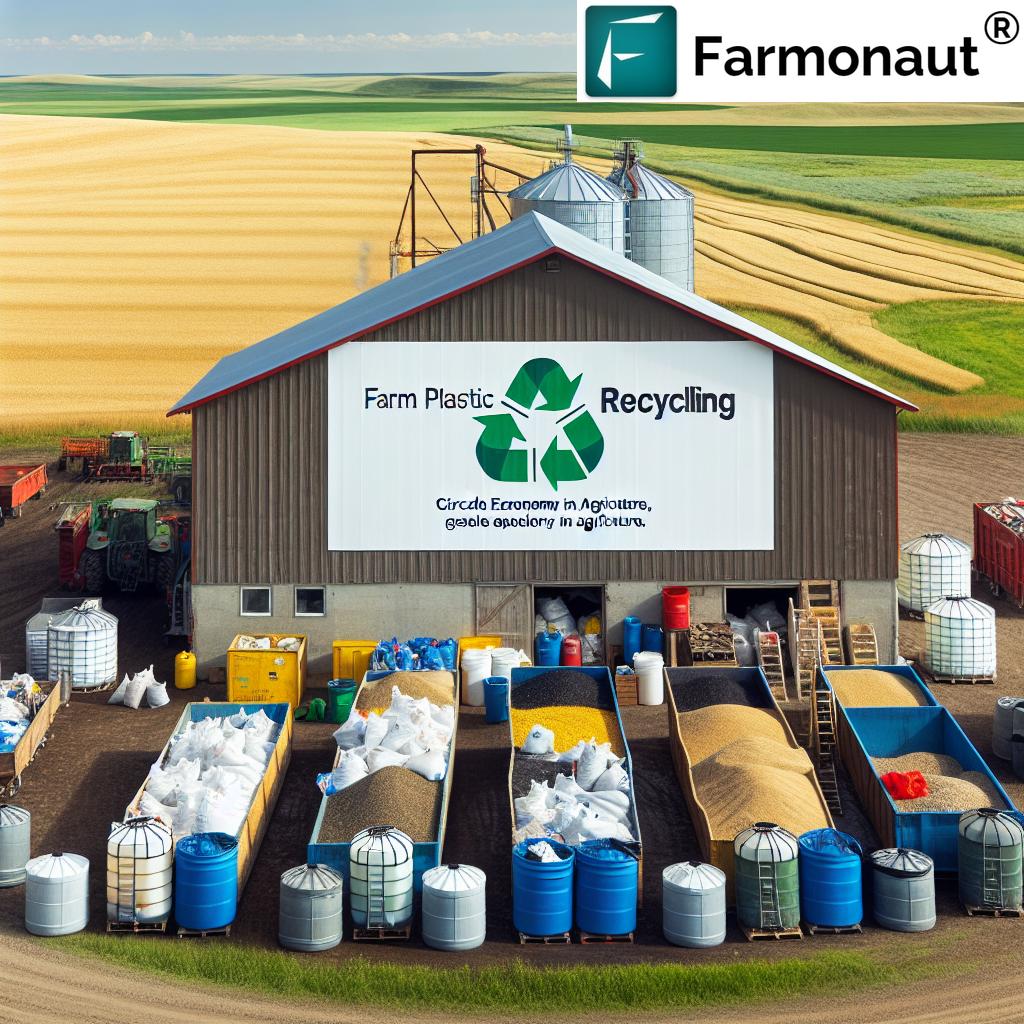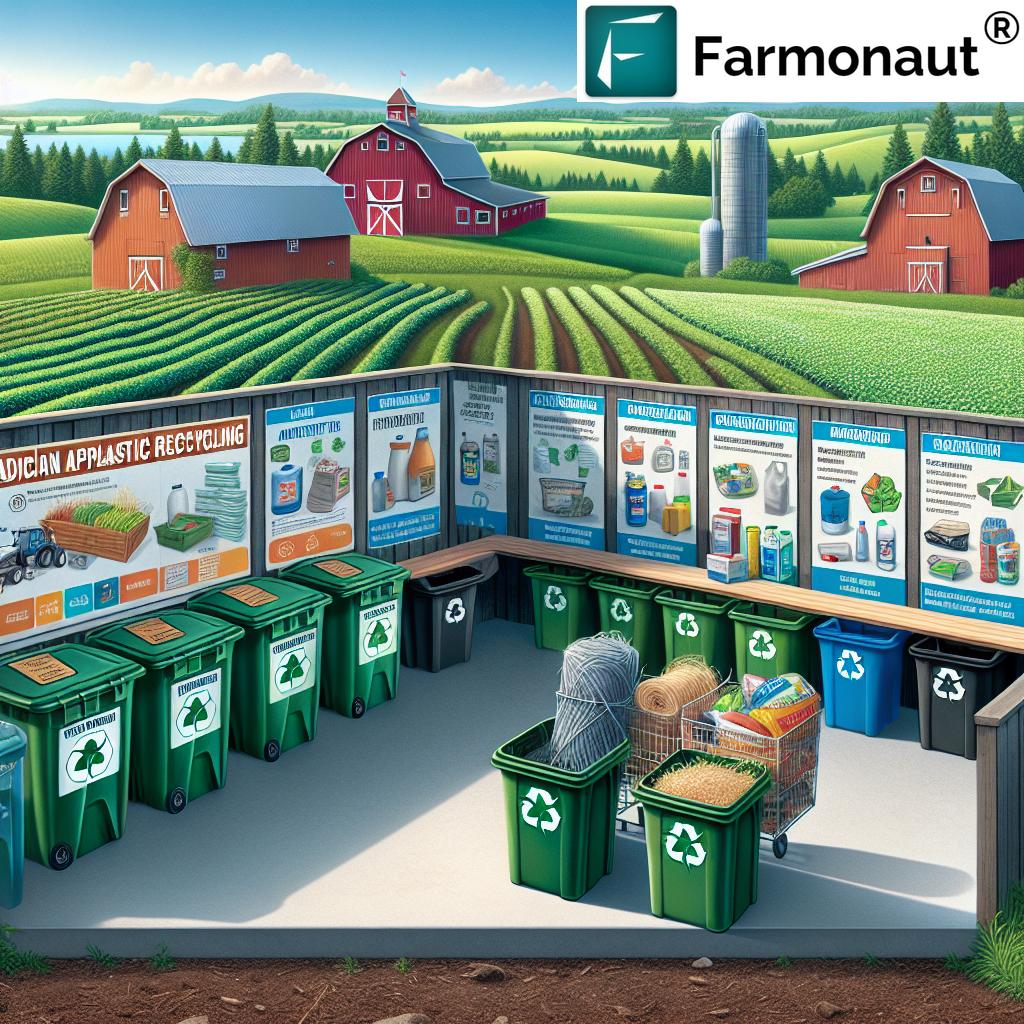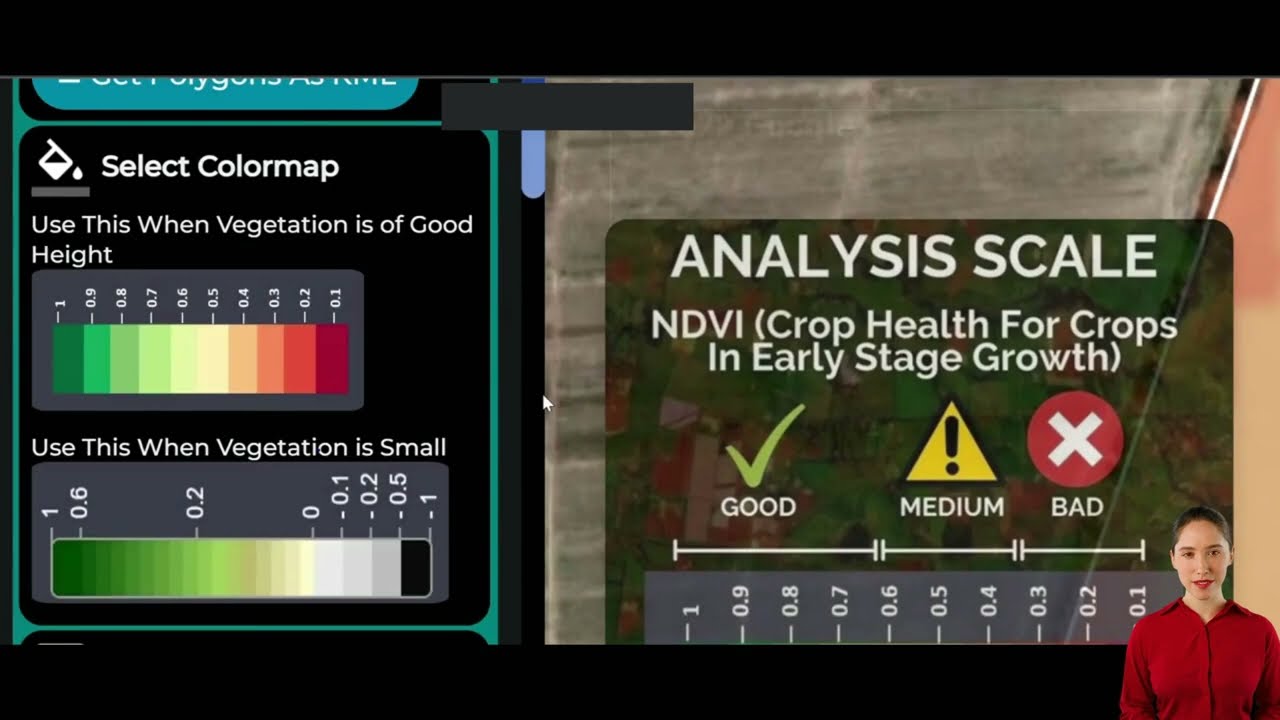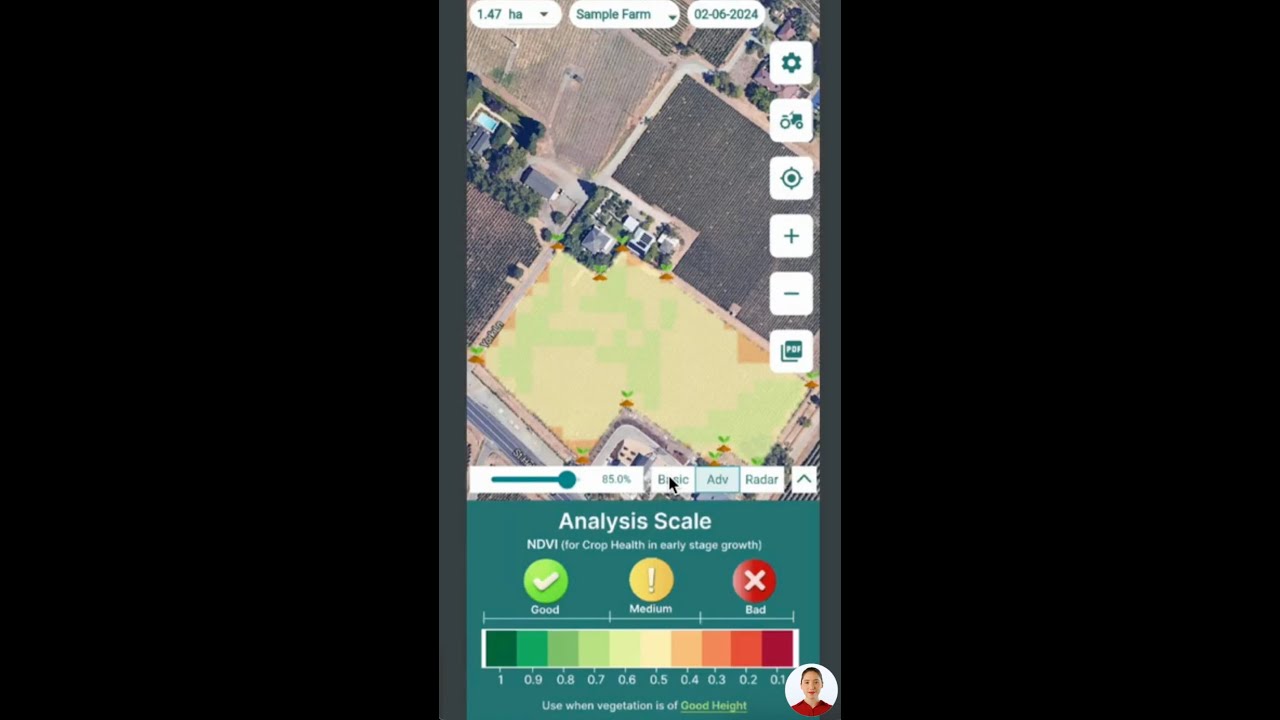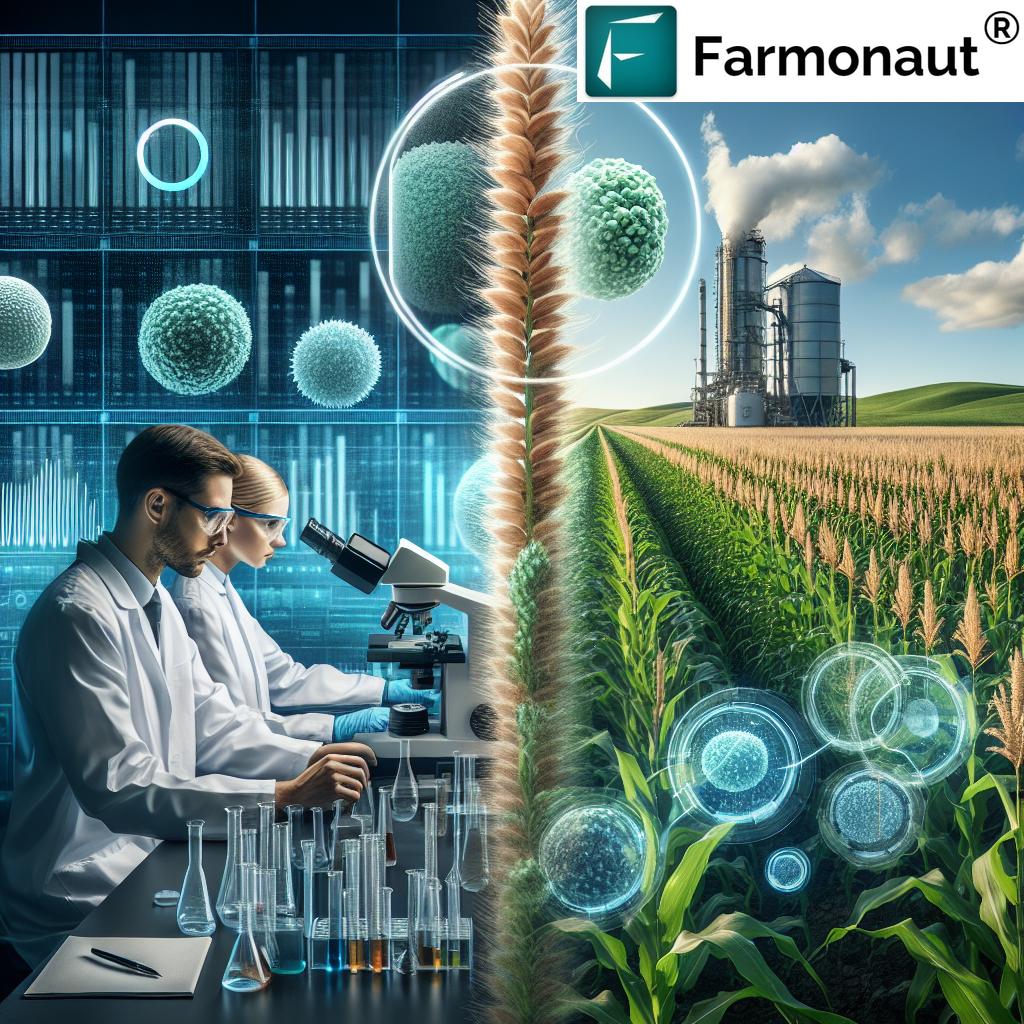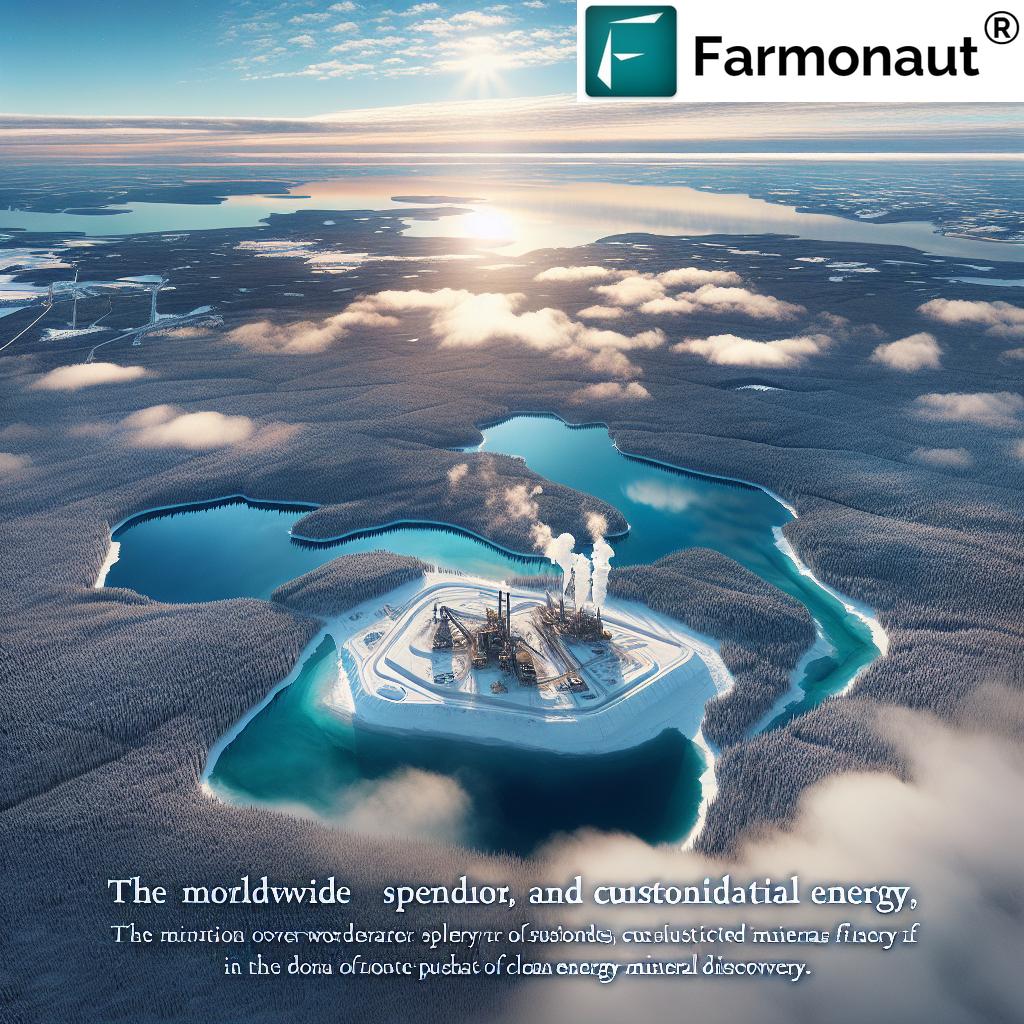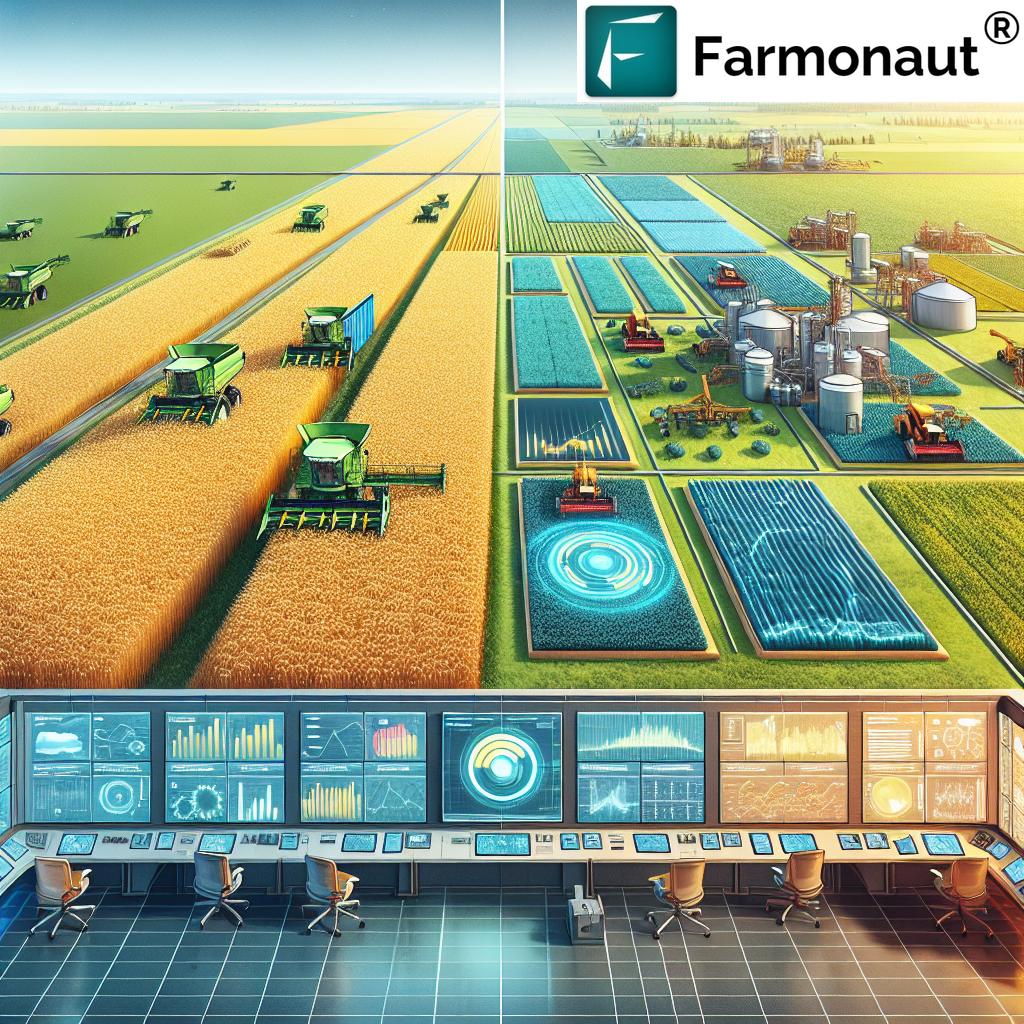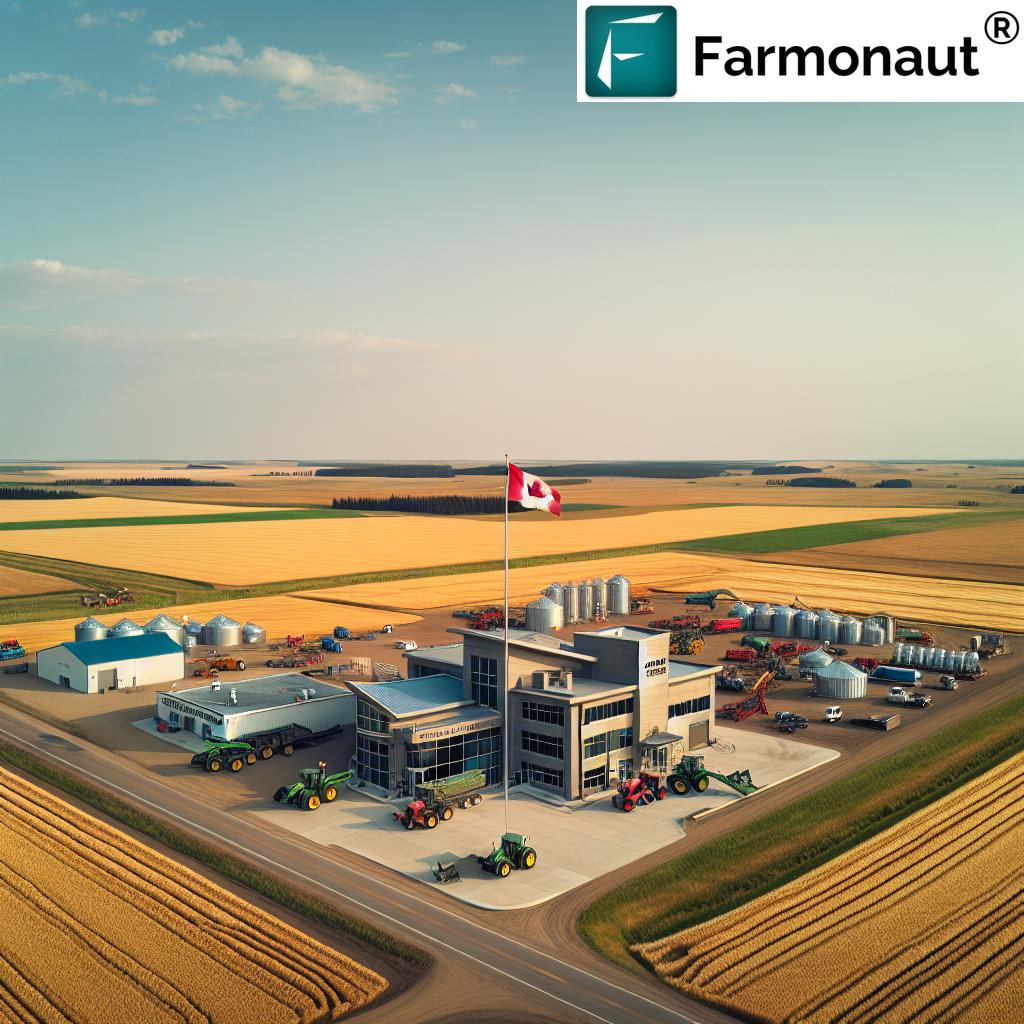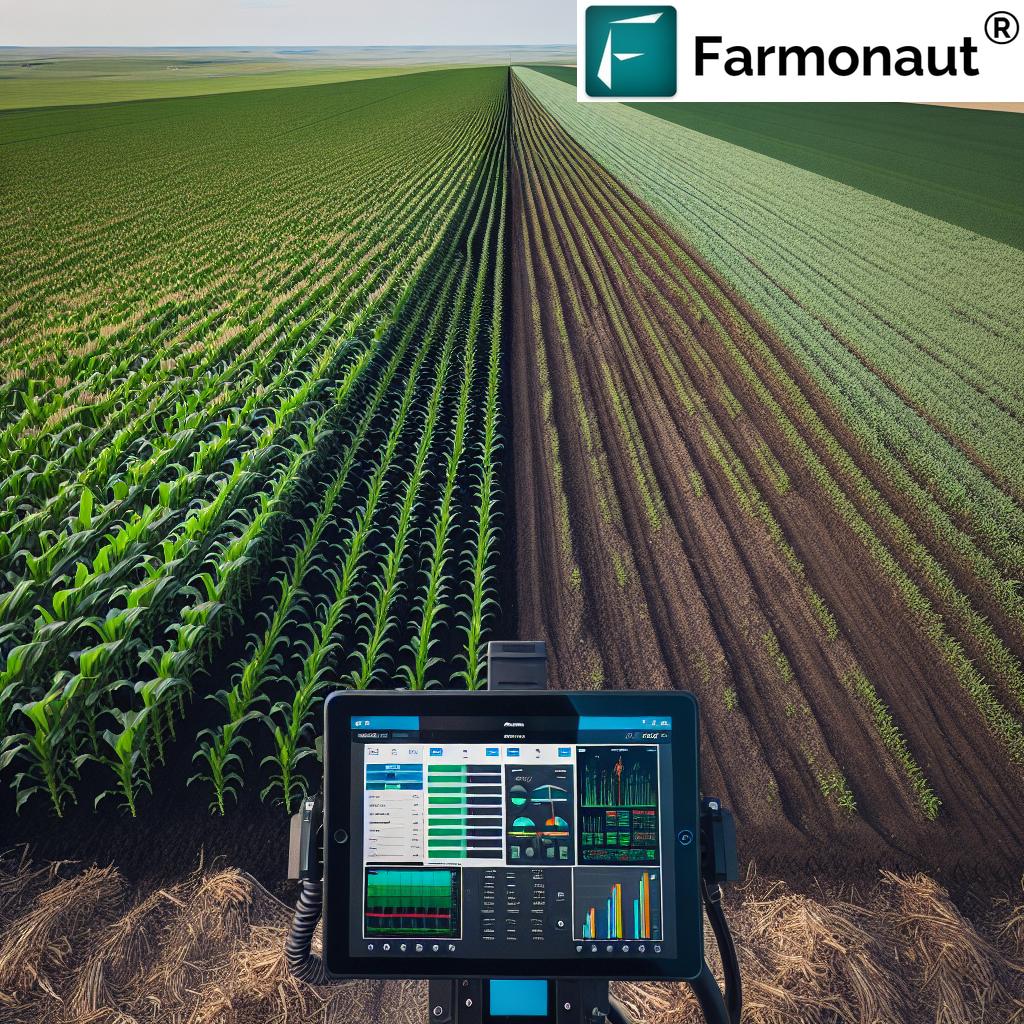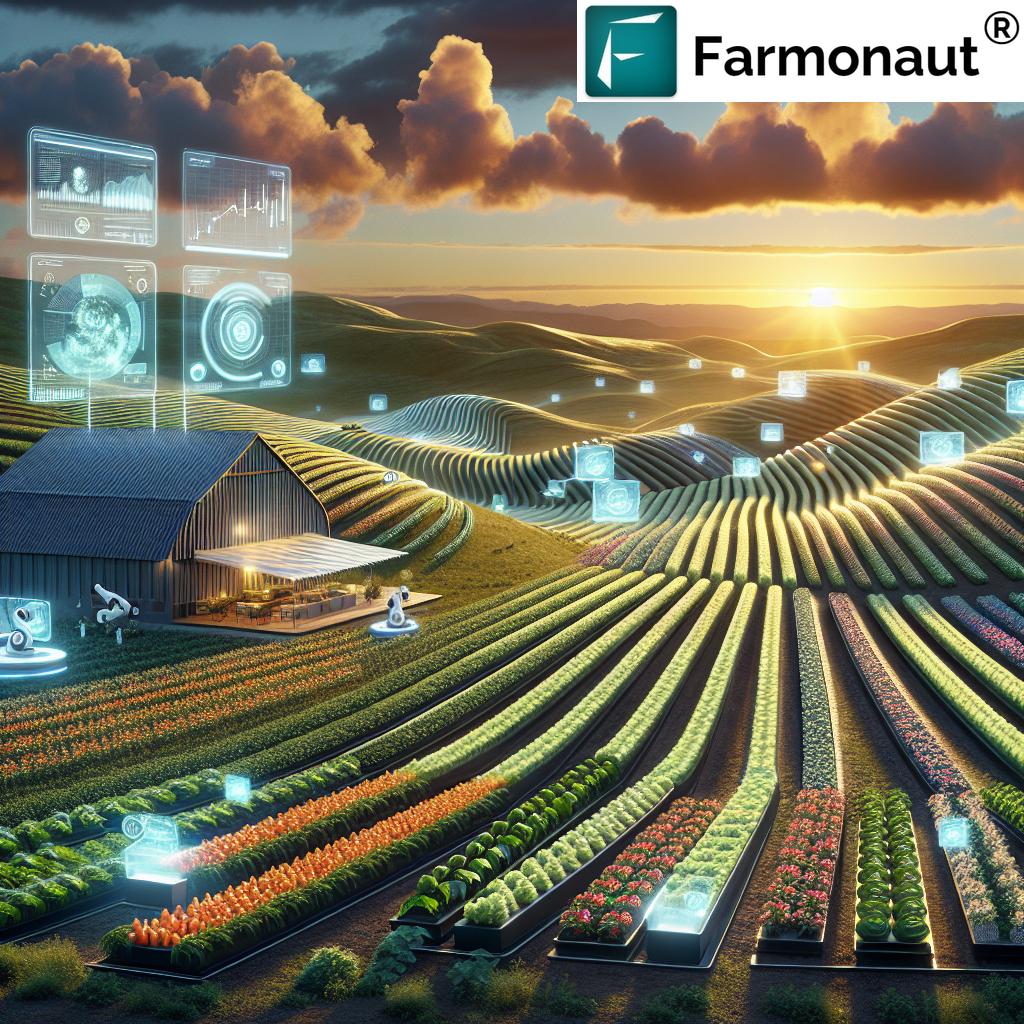5 Ways Canadian Farmers Lead in Farm Plastic Recycling Sustainability
Introduction: Farm Plastic Recycling in Canada
At the heart of modern agriculture lies a profound shift in how we approach responsible management of agricultural waste. As Canadian farmers, we are not only stewards of the land we plant and cultivate but also innovators in driving sustainability and environmental stewardship in agriculture. Nowhere is this commitment more visible than in farm plastic recycling Canada.
From grain bags on the Prairies to crop input containers and fertilizer drums in Ontario and Quebec, Canadian agriculture is pioneering the collection, recycling, and repurposing of plastics, leading the way toward a truly circular economy in agriculture. Our focus on recycling is not just about waste reduction — it’s about building a sustainable, resilient future for our farms, our communities, and the generations to come.
“Canadian farmers recycled over 6,000 tonnes of agricultural plastic in 2022, advancing sustainability and circular economy efforts.”
Canadian Farmers’ Leadership in Plastic Recycling
Canadian farmers have always been at the forefront of clean farms initiatives, setting global benchmarks in agricultural recycling programs. With a steadfast commitment to sustainability, we continue to push for innovative recycling solutions for farms. This Earth Day, as recognized in the latest Globe Newswire release from Etobicoke, Ontario, we’re celebrating the tangible results of our dedication:
- Over 2.2 million kg of used 23L pesticide and fertilizer containers returned in 2024 alone.
- A consistent three-year average national recovery rate of 78% (2021-2023) for these containers.
- Over 1,300 collection sites operating across Canada, ensuring accessibility and engagement for all regions.
These achievements highlight our vital role in building a circular economy in agriculture, reducing reliance on virgin plastics, and fostering a cleaner, healthier environment. But what sets Canadian farmers apart? Let’s explore the five key ways we lead the world in farm plastic recycling sustainability.
5 Ways Canadian Farmers Lead in Farm Plastic Recycling Sustainability
Across Ontario, Quebec, the Prairies, and the Maritimes, our community has embraced a spectrum of programs. Here are the top 5 initiatives that define Canadian leadership:
-
1. Nation-Wide Used Pesticide Container Recycling
Collection sites for farm plastics are now a familiar part of the Canadian landscape, especially for 23L pesticide and fertilizer containers. These sites, managed by organizations like Cleanfarms, enable us to return thoroughly rinsed containers, ensuring they are responsibly recycled into new farm products instead of entering landfills.
- This effort enables farmers across Canada to reduce plastic waste by millions of kilograms per year.
- With over 1,300 sites accepting these containers, accessibility and participation are at an all-time high.
The journey from used containers to new, useful products in North America is at the heart of our circular economy in agriculture.
-
2. Recycling Grain Bags and Twine Across the Prairies
The expansive farmlands of Saskatchewan, Alberta, and Manitoba see significant use of grain bags and agricultural twine. Instead of becoming waste or incinerated, more than 70% of plastic from grain bags is now collected and diverted for recycling.
- Provincial programs have set up dedicated collection sites for these materials.
- Once collected, the plastics are baled and shipped off to specialized recycling facilities to be transformed into items like plastic lumber or new bags.
This breakthrough dramatically reduces agricultural carbon footprints and landfill usage while setting a benchmark for responsible management of agricultural waste.
-
3. Recycling and Safe Disposal Programs for Bulk Containers, Totes, and Drums
Large plastic totes and drums for pesticides and fertilizers are key to farm operations, but they once constituted a significant environmental burden. Through Canada-wide recycling programs, these bulk containers are now collected, cleaned, and repurposed.
- The initiative supports safer storage practices, safe disposal of unwanted pesticides, and minimal environmental risk.
- Recovered plastics are processed here in North America, minimizing the demand for virgin resources.
-
4. Agricultural Recycling Programs Addressing Diverse Plastics (Quebec & Beyond)
In Quebec, specialized agricultural recycling programs have broadened the types of plastics managed — including maple sap tubing vital to the province’s syrup industry, as well as bags for animal feed, peat moss, bedding, and even old livestock and equine medications.
- Farmers separate different types of plastics for bespoke collection and responsible management.
- Non-recyclable plastic waste is steered into dedicated waste channels for safe disposal.
-
5. Robust Education and Accessibility Campaigns
Effective recycling isn’t just about facilities—it’s about ongoing education, outreach, and ease of participation. Cleanfarms and other organizations are continually piloting new awareness programs, improving signage at collection sites, and holding seasonal drives to make participation intuitive and rewarding.
- Seasonal reminders coincide with key agricultural periods, such as planting and harvest.
- Materials explaining proper rinsing, sorting, and bundling help ensure plastics are accepted and effectively recycled.
This education-first approach amplifies community action and bolsters the future of ag plastics recycling in Canada.
Watch: Farmonaut’s Impact on Farm Management & Sustainability
Comparison Table: Innovative Farm Plastic Recycling Programs
The following table breaks down each of the five leading initiatives, offering insight into their environmental impact and farmer participation rates. This structured overview helps illustrate how Canadian agricultural plastics recycling continues to grow in scale and effectiveness.
| Initiative/Program | Description | Estimated Annual Plastic Diverted (Tonnes) | Environmental Impact | Farmer Participation Rate (%) |
|---|---|---|---|---|
| Used Pesticide Container Recycling | National network for 23L containers. | 2,200+ | Reduces landfill waste, enables re-manufacturing of farm products, models circular economy in agriculture. | 78% |
| Grain Bag & Twine Recycling | Prairie-based collection of grain storage plastics. | 1,500+ | Significant reduction in field and landfill plastic; supports plastic-to-lumber conversion. | 70%+ |
| Bulk Tote & Drum Programs | Recycling of large pesticide/fertilizer containers. | 500 | Cuts down on single-use plastics, reduces chemical risk from improper disposal. | 55-60% |
| Diversified Provincial Initiatives | Quebec & regional programs for sap tubing, feed, moss, bedding bags. | 400 | Addresses specialty ag waste streams and supports industry compliance. | 60% |
| Education & Outreach Campaigns | Seasonal drives and ongoing awareness across regions. | 200 | Boosts recycling efficacy, prevents contamination, and increases program reach. | Estimated 80% touch rate |
Watch More: How Farmonaut Supports Future-proof Farming
“More than 70% of Canadian grain bag plastic is now collected and recycled through innovative farm recycling programs.”
Farmonaut: Supporting Sustainable Farm Management
As the drive toward sustainable management of agricultural plastics gains pace, modern technology is reshaping how farmers make data-driven decisions. Powered by satellite imagery, artificial intelligence, and even blockchain, Farmonaut is a pioneering agri-tech company simplifying precision agriculture for farmers of all scales.
Our role as stewards is amplified by tools that allow for:
- Real-time crop health monitoring—spot issues early, reduce input wastage, and maximize yields with satellite-derived vegetation and soil insights.
- AI-based advisory systems—get instant, personalized best-practice advice for irrigation, pest, or fertilizer action with Jeevn AI.
- Blockchain-based traceability—create transparent food and fiber supply chains. Learn how traceability builds trust in agricultural products.
- Efficient resource management—track vehicles, optimize logistics with fleet management solutions from Farmonaut.
- Carbon footprinting—quantify and control environmental impact. Explore Farmonaut’s carbon footprint tracking feature for real sustainability action.
Farmonaut’s technology, accessible via web, Android, iOS apps, and powerful APIs (developer docs here), empowers everyone from individual farmers in remote areas to large-scale agribusinesses and government agencies.
We envision a future where every farm leverages digital tools to make responsible management of plastics, water, energy, and natural resources seamless and actionable. To experience Farmonaut in action, see our integrated large-scale farm management app.
Strong Farmer Participation and Community Action
Our collective success in Canadian agricultural plastics recycling comes down to the hands-on participation of farmers, rural collection site staff, and industry workers. By putting boots on the ground, we’ve turned innovative recycling solutions for farms from pilot projects into proven, scalable systems. Canadian programs have become blueprints for environmental stewardship in agriculture globally.
Local engagement isn’t just encouraged—it’s essential. The impact is felt:
- In cleaner ditches, fields, and communities.
- Through healthier soils, local watersheds, and wildlife habitats.
- In a farm culture where recycling and waste minimization come as naturally as planting and harvest seasons.
Each season brings renewed opportunities to recover even more plastics—from the start of collection each spring, to the education initiatives that remind us how small actions add up to large environmental impacts.
With each container, bag, or length of twine we recycle, we are widening the impact of our stewardship and forging a circular economy in agriculture built on action, not just intention.
Farmonaut Tools & Resources: Empowering Sustainable Agriculture
If you’re eager to make data-driven, sustainable practice the backbone of your farm, explore Farmonaut’s accessible, affordable subscription services for every scale:
- Web, Android, and iOS apps: Remotely monitor field health, irrigation, input usage, and crop risk anywhere, anytime.
- API Integration: Seamlessly connect real-time satellite and weather data to your own ag platforms (Farmonaut API | developer docs).
- Traceability & Carbon Footprinting: Appeal to eco-conscious buyers and regulators with emissions tracking and blockchain-backed product traceability.
- Large-Scale Admin Dashboard: Agribusinesses and policy makers can manage vast acreages, plan actionable stewardship, and optimize inputs through the Farmonaut farm management platform.
- Crop Loan & Insurance Verification: Simplify lending and risk management with remote, reliable crop area estimation and monitoring: learn more here.
Frequently Asked Questions: Farm Plastic Recycling Canada
What types of farm plastics can I recycle through Canadian programs?
- Pesticide & fertilizer containers (especially 23L or under)
- Grain bags and agricultural twine
- Large totes and drums for pesticides and liquid fertilizers
- In Quebec and some provinces, maple sap tubing, animal feed, peat moss, and bedding bags
- Select programs also collect used silage bags, old livestock/equine meds, and other specialty plastics
How do I participate in a farm plastic recycling program?
Visit your nearest collection site, ensure containers are rinsed and clean, sort materials as instructed (bags, twine, etc.), and follow posted program guidelines. Many programs offer seasonal reminders and community drives to maximize convenience.
Why is farm plastic recycling important for Canadian agriculture?
Recycling reduces environmental impact, landfill usage, chemical leakage, and wild plastic in the landscape. It supports the circular economy—enabling plastics to become new farm products, reducing reliance on virgin resources, and building consumer trust in agriculture’s commitment to stewardship.
Are there government incentives or support for farm plastic recycling?
Many provinces and stewardship organizations like Cleanfarms provide infrastructure, educational resources, and sometimes financial support for participation. Farmers are encouraged to engage with local programs for any region-specific incentives.
Can Farmonaut help me track environmental stewardship on my farm?
Absolutely! Through carbon footprinting tools, crop health data, and resource monitoring, Farmonaut enables you to quantify and visualize your sustainability efforts, enhancing reporting for grants, compliance, or eco-certification.
Conclusion: Leading the Way to a Greener Future
As Canadian farmers, we’ve made environmental sustainability and agricultural recycling an integral part of our daily practice. Every grain bag, container, drum, and length of twine recycled — and every new technology adopted for better stewardship — strengthens our vital role as environmental caretakers.
With farm plastic recycling Canada initiatives leading the world, our actions today ensure a thriving, circular tomorrow. Let’s continue to innovate, educate, and push boundaries in farm plastic recycling — for the land, our communities, and the generations that will inherit our soils.
Ready for smarter, more sustainable farming?
Get started with Farmonaut — your all-in-one platform for farm health, traceability, and sustainability. Launch the Farmonaut Web App now or download our Android and iOS apps to keep your farm, and the planet, thriving.


